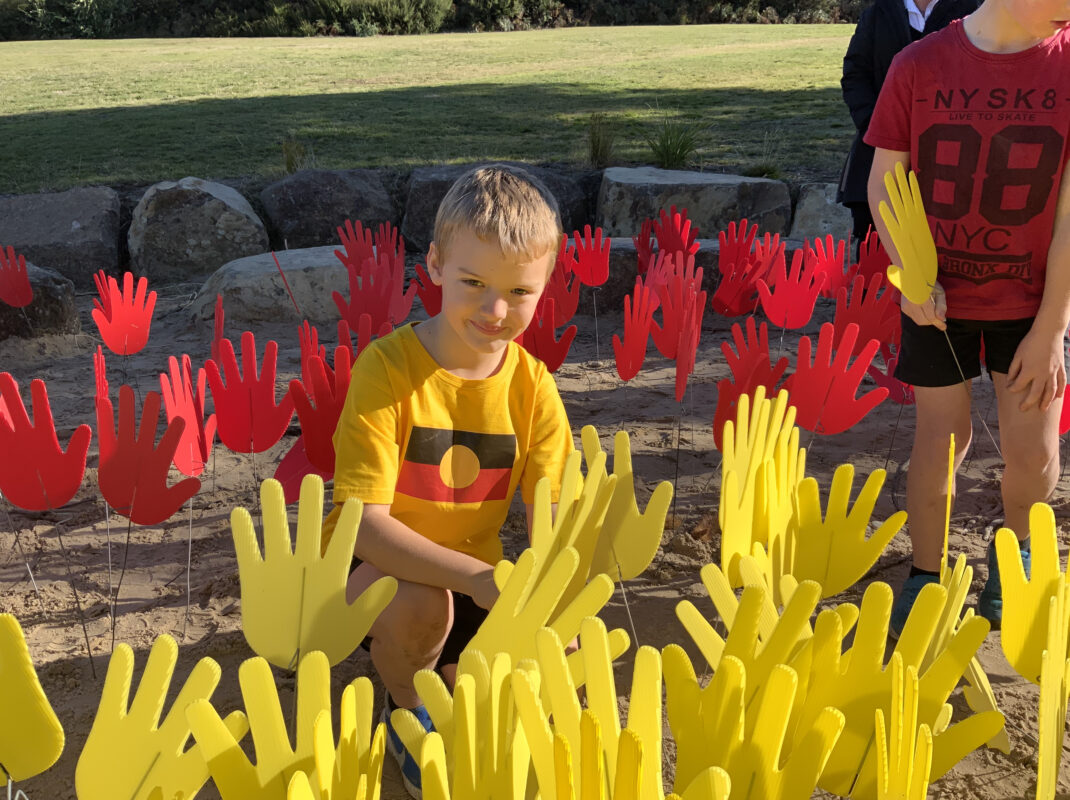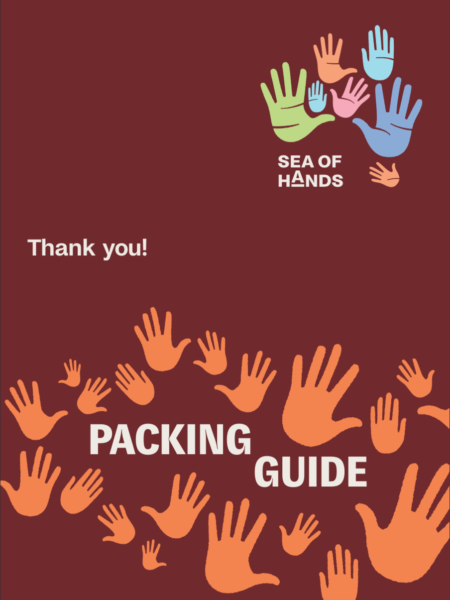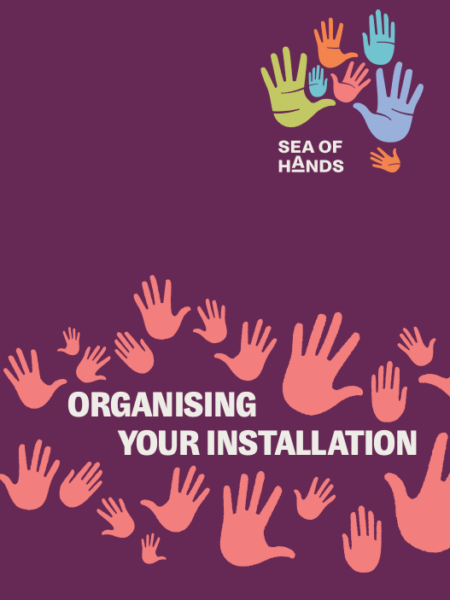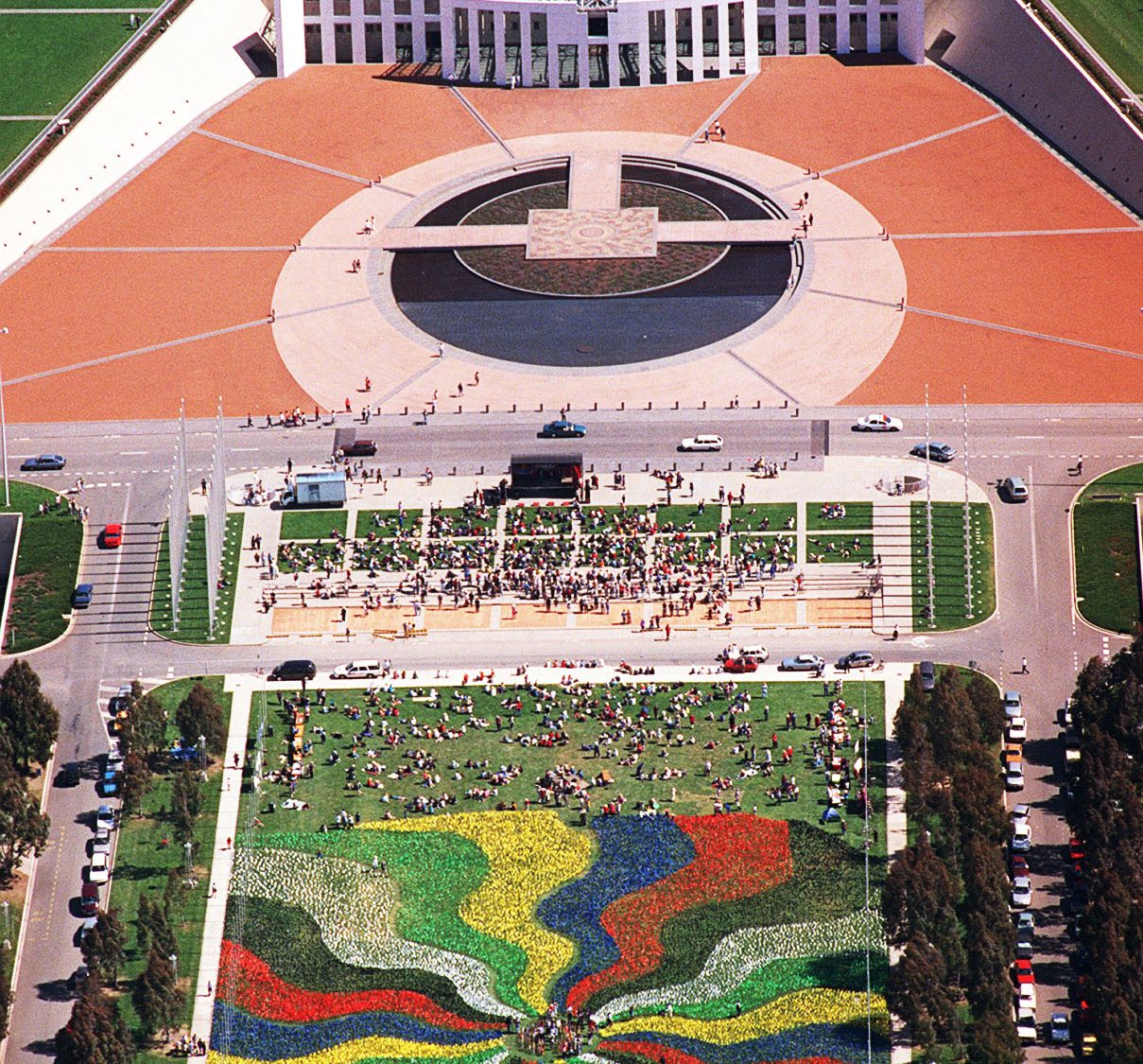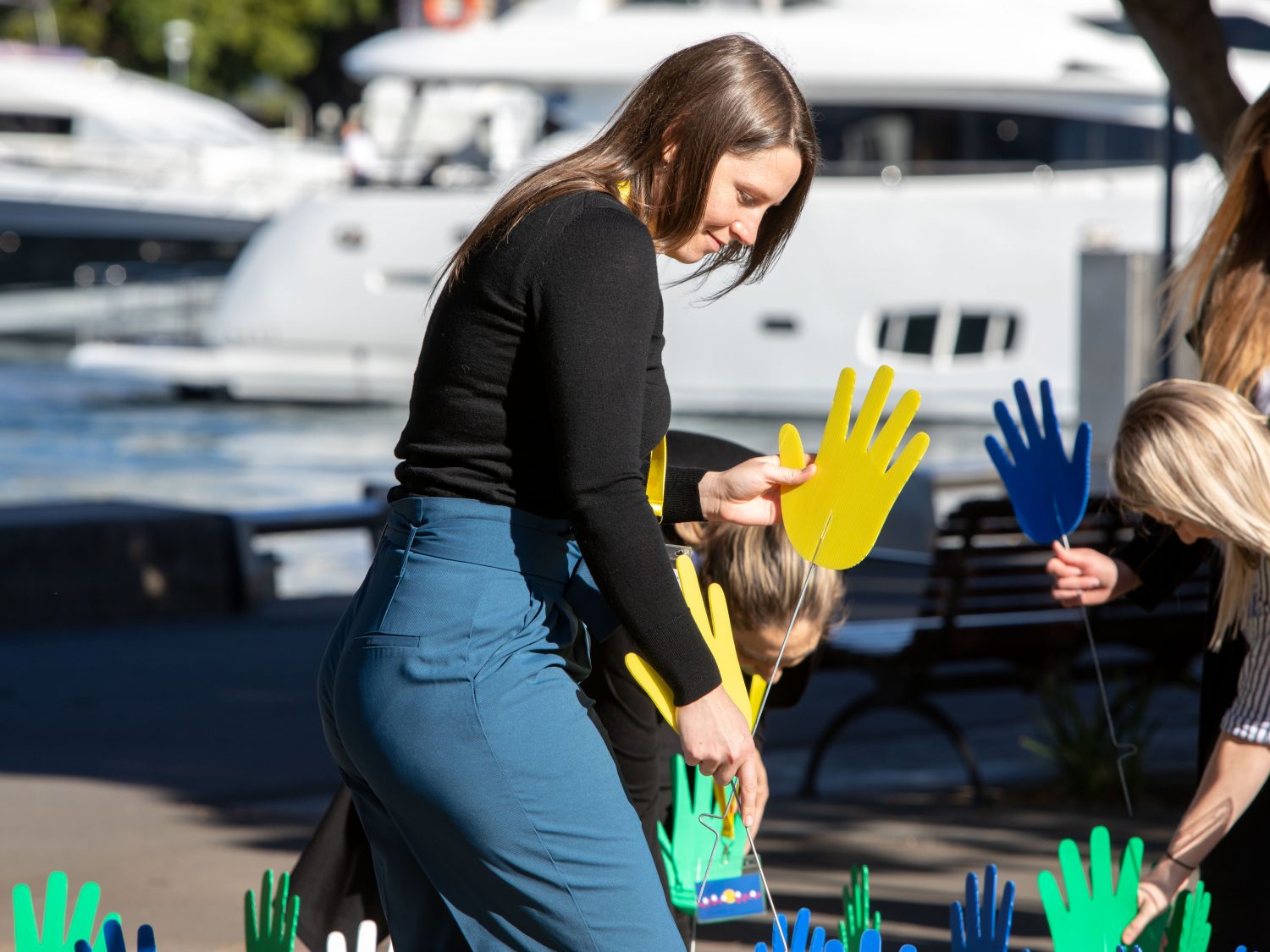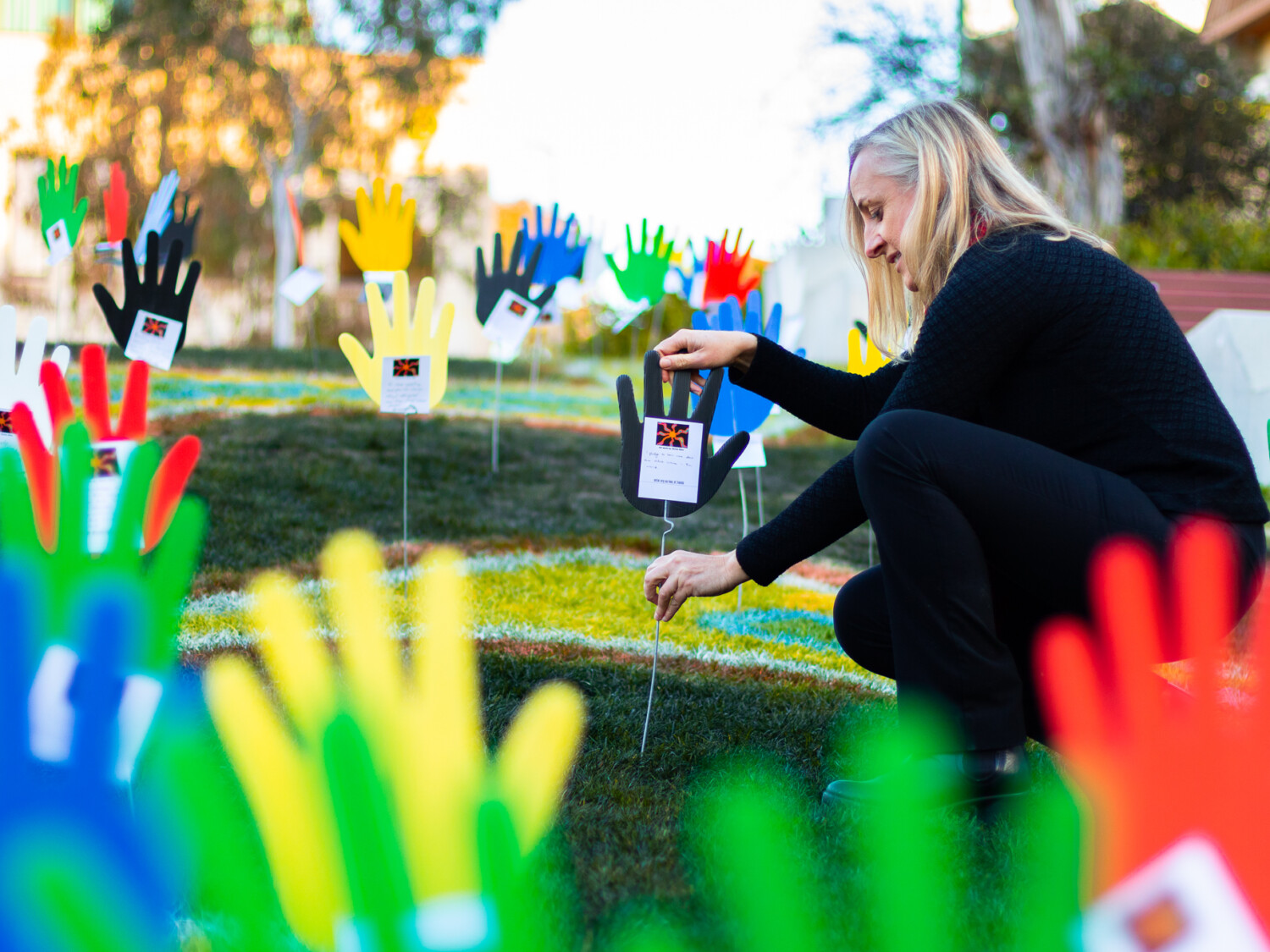Organising an Installation
Over 25 years, more than a million Australians have participated in community installations of the SoH around the country. We have all the tips and tricks for your installation right here!
Considerations
- Consider using a soft/watered ground to reduce damage to the hands and metal posts;
- The hands typically need to be pierced into the ground by 5-8cm to be sturdy;
- Using ground spray chalk (available from most hardware stores) mark out the design on a grassed area. Below are some basic ideas and the method for marking out the design on the grassed area, then fill with the hands;
- Have a planting station set up and organise the hands by colour to coordinate the hand planting for your chosen design. Participants affix their ‘Reflection Card’ (if applicable) at this station before planting as directed. It’s always a good idea to plant from the inside out.
Design Options
For an installation to appear at its best we suggest 16-20 hands per square metre. Meaning an 800 hand installation would be 40sq metres ie. 6.33 m x 6.33m. Ideally there should be 8-15cm between each hand.
The Aboriginal Flag

- Black – represents the Aboriginal people of Australia;
- Yellow circle – represents the Sun, the giver of life and protector;
- Red – represents the red earth, the red ochre used in ceremonies and Aboriginal peoples’ spiritual relation to the land.
Steps:
- Mark out the rectangle with ground chalk and mark out the center point and center line at the same time;
- With string or rope held at the center point, measure the radius, then rotate the taut string, spraying the ground chalk as you go.
The Torres Strait Islander Flag
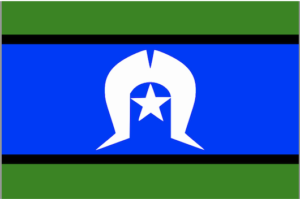
- The Dhari – A symbol of Torres Strait Islander people and is used in cultural ceremonies and dance;
- The white five-pointed star – Symbolises peace, and the navigational importance of stars to the seafaring people of the Torres Strait. It also represents the five distinct language and cultural groups of the region;
- The deep green – Represents the land;
- Black – Represents the people;
- Blue – Represents the colour of the seas.
Steps:
- Mark out the rectangle with the ground chalk.
- Next make identical interval marks along the left and right sides. Use rope or string to get a straight line between the intervals, spray the ground chalk to mark out the various horizontal lines.
- Before continuing, make sure you have marked out the centre point of the rectangle as a reference point.
- To mark out the Dahri (which is a traditional Torres Strait Islander headdress) and the central FIVE pointed star. You have two options:
Option – with a careful hand mark the outline of the shapes, starting with the FIVE pointed star, then the Dahri around it. Tip. Make use of your own further reference marks to help make it look as authentic as possible.Using butcher paper, create a real size stencil of the shapes first. Ensure it is as authentic as you can make it, cut out the shapes and spray the ground chalk around it. Whichever option you choose, the Dahri should fit a centred square of the following dimensions based on the number of Hands you have to work with.
Ribbons
Simple rectangles with wavy ribbons of the available colours are simple yet appealing.
- Start with marking out the rectangle of a suitable size (see below as a guide) with the ground chalk. The rectangle can be whatever dimensions suit the area you have to work with;
- Next make identical interval marks along the left and right sides. Use rope or string to get a straight line between the intervals, spray the ground chalk along the string, oscillating either side of the string to create a wave in the ribbons of colour;
- It looks best if the waves match each other, but they can be thin or thick, you can be creative with this design.
Source an original design
You may wish to consider sourcing an original design from Aboriginal or Torres Strait Islander students, their families, communities or local artists.
This can take some time to organise when you factor in identifying your artist and then their individual artistic process.
In our experience the artists may provide an illustration or painting that will need to be interpreted for the Installation. For example, identify key reference points, ratios for scale, dimensions e.t.c. so that you can plan for replicating their artwork authentically on the grassed area.
